Showing 17–32 of 33 results
-
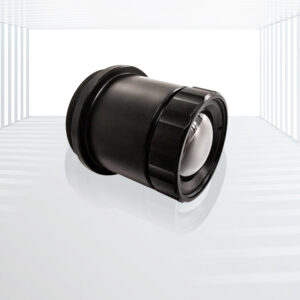
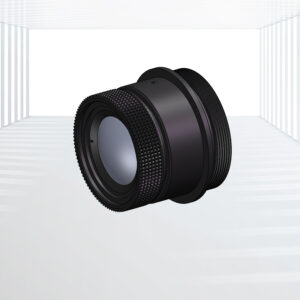
Wide Angles of View: Fisheye lenses with up to 180° diagonal FOV and super wide-angle lenses with FOVs between 80° and 110°.
Compact Architectures: Designed to fit various thermal imaging systems.
Compatibility: Suitable for multiple detector sizes.
Focusing Options: Available in manual focusing or fixed focal length versions.
Pinhole Lens Modules: Super wide-angle and fisheye lenses with miniature apertures for compact and concealed designs, ideal for tight spaces and specific industrial applications.
Full-Frame Fisheye Lenses: Provide a full 180° diagonal FOV for comprehensive scene capture.
Applications: Security and Surveillance, Industrial Inspection, Military and Defense, etc.
-
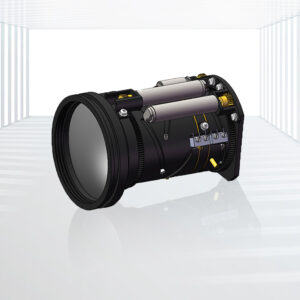
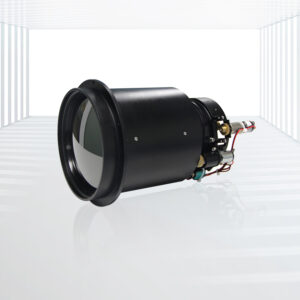
Maximum Zoom Ratio: Up to 13X, providing a significant range of focal lengths.
Focal Length Range: From wide-angle to a maximum telephoto focal length of 400mm.
Durability: Diamond-like carbon (DLC) coatings on the front lens and tight sealings for enhanced durability.
Zooming Mechanisms: (1)Manual Zooming: Allows users to adjust the zoom manually. (2)Motorized Zooming: Enables remote control of the zoom function.
Microscope IR Imaging: Zoom lenses specifically designed for microscope IR imaging are also available.
Custom Solutions: Custom LWIR zoom lenses can be designed and manufactured to meet specific requirements.
Applications: Security and Surveillance, Military and Defense, Industrial Inspection, etc.
-
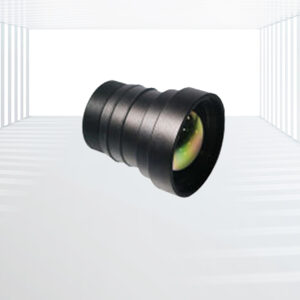
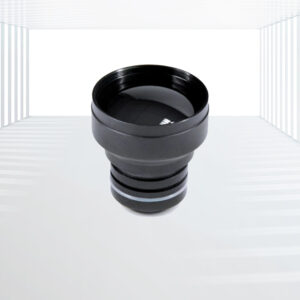
Magnification Range: Available magnifications from 1x to 23x, catering to various inspection and analysis needs.
Optimized for Thermal Cameras: Ensures seamless integration and superior performance with thermal imaging devices.
High-Quality Optics: Advanced design and superior quality guarantee exceptional image clarity and sharpness.
Operational Flexibility: Suitable for extreme temperature conditions, maintaining optical clarity and high sensitivity.
Versatile Applications: Includes specialized LWIR lenses for diverse applications, ensuring reliable imaging in various environments.
Applications: Industrial Inspection, Research and Development, Medical and Biological Analysis, Electronics and Semiconductor Inspection, etc.
-
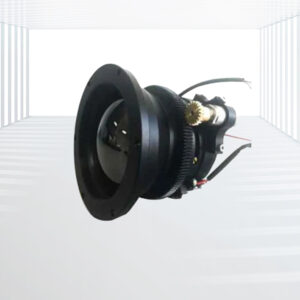
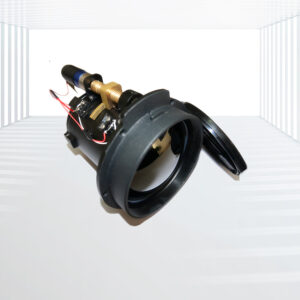
Dual Field of View: Dual FOV lenses have a built-in mechanism that allows switching between two different focal lengths. This provides:
- Wide-Angle Mode: A shorter focal length for observing broader areas.
- Narrow-Angle Mode: A longer focal length for capturing detailed images of closer objects.
High Transmission and Low Distortion: These lenses are optimized for high transmission in the MWIR wavelength range, ensuring excellent image quality with minimal distortion.
Modulation Transfer Function (MTF): The optical design of dual FOV lenses ensures high MTF qualities, which means that the lenses can accurately reproduce fine details and provide high-contrast images.
Applications: Surveillance and Security, Industrial Inspection, Scientific Research, etc.
-
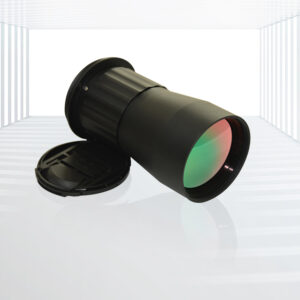
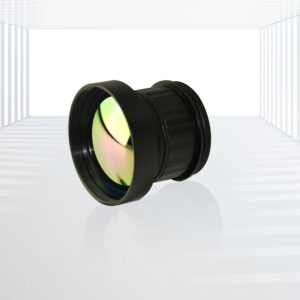
Fixed Focal Length: Single FOV lenses are characterized by their fixed focal lengths, which in turn determines their FOV. The focal length and the dimension of the detector together define the FOV, with the detector dimension remaining constant.
Adjustable Focus Mechanism: Despite having a fixed focal length, single FOV lenses often include mechanisms that allow users to fine-tune the focus:
- Manual Focusing: Users can adjust the focus manually by turning a focus ring or knob.
- Motorized Focusing: Users can remotely adjust the focus using a motorized system, which is particularly useful for applications where manual adjustments are impractical.
Thermal Stability and Athermalization: Some single FOV lenses are athermalized, meaning they are designed to maintain focus despite temperature changes, ensuring consistent performance in varying environmental conditions.
Applications: Surveillance and Security, Industrial Inspection, Scientific Research, etc.
-
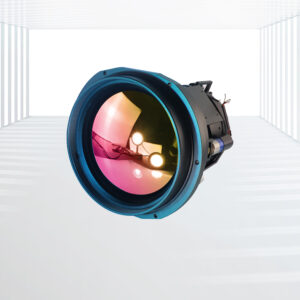
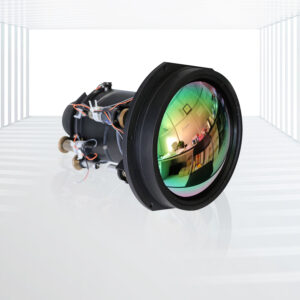
Flexible Zooming: Smooth adjustment of focal lengths for capturing images at various distances.
High Magnification: Maximum magnification of x20.
Diffraction-Limited MTF: Outstanding Modulation Transfer Function (MTF) for sharp, high-resolution images.
Maintained Focus: Consistent focus throughout the full zoom range.
Lightweight and Large Aperture: Ideal for diverse surveillance and monitoring missions.
Compatibility: Supports high-resolution imaging with cooled detectors.
Applications: Long-range surveillance, Border and perimeter security, Search and rescue operations, High-resolution thermal imaging, etc.
-
-300x300.jpg)
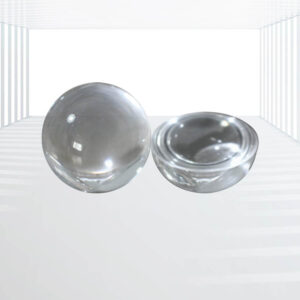
High Transmittance: Sapphire’s inherent optical properties ensure minimal absorption and scattering, resulting in high transmittance across a wide spectral range.
Durability: With a Mohs hardness of 9, sapphire lenses are highly resistant to scratches, abrasion, and chemical attack, making them suitable for harsh environments.
Precision Optics: The lenses are manufactured to precise specifications, ensuring optimal performance in demanding optical systems.
Customizability: Available in various diameters, coatings, and surface qualities, these lenses can be tailored to specific application requirements.
Applications: Medical Devices, Telecommunications, Scientific Research, Aerospace, Industrial Inspection, etc.
-
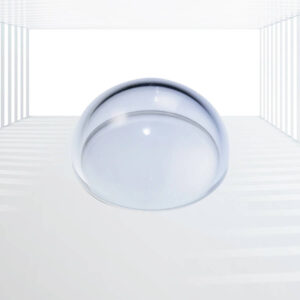
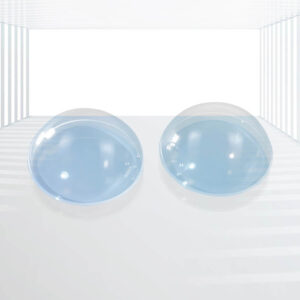
Hardness and Scratch Resistance: Sapphire is second only to diamond in terms of hardness, making it extremely resistant to scratches and abrasions.
Wide Transmission Range: Sapphire domes offer excellent optical clarity across a broad wavelength spectrum, from UV to MWIR, enabling multi-spectral operations.
Ruggedness: The exceptional toughness of sapphire domes makes them suitable for high-speed applications, providing robust protection in challenging environments.
Applications: Aircraft, Industrial, Missile, Scientific Experiments, etc.
-
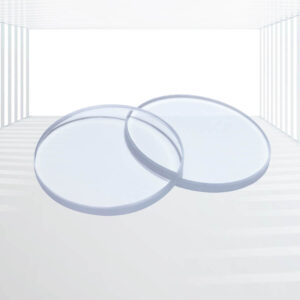
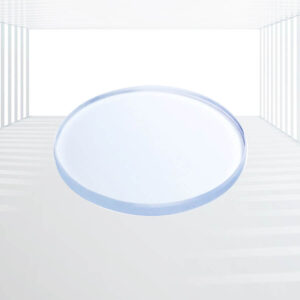
Unrivaled Hardness and Ruggedness:
- Sapphire has a Mohs Hardness of 9, making it the second hardest material after diamond.
- Extremely resistant to scratches and abrasions, ensuring clear optical apertures even under attack from sand/grit.
- Ideal for applications involving splattering abrasive particles, such as drilling viewport windows, protective laser processing windows, and gun sights.
Thin and High-Pressure Resistant:
- Due to firm internal covalent bonding, sapphire windows can be manufactured thinner without fracture compared to dielectric materials.
- Capable of withstanding high pressure, making them suitable for aviation and deepwater contexts.
High-Temperature Tolerance:
- Sapphire has a working temperature limit of up to 1600℃ and a melting point of 2000℃.
- High thermal conduction provides a unique advantage in handling high-temperature situations compared to other optical materials.
- Great options for high-temperature plasma chambers, combustion chambers, etc.
Solid Chemical Inertia:
- Sapphire exhibits chemical inertia to common acids/alkalines, with the exception of hot caustic salts.
- Outperforms other materials in coping with corrosive chemicals and erosive atmospheres.
- Suitable for applications in pharmaceuticals, medicines, and chemical facilities.
Broad Spectral Transmission:
- Sapphire windows offer a broad spectral transmission range of 150nm-5500nm.
- Compared to N-BK7 and UV Fused Silica, sapphire excels with better UV functions, broader IR transmission, and less IR absorption.
- Ideal for critical optical operations in multi-spectrum applications.
Applications: Optical Applications, Protective Applications, Extreme Environments, Chemical and Pharmaceutical Industries, etc.
-
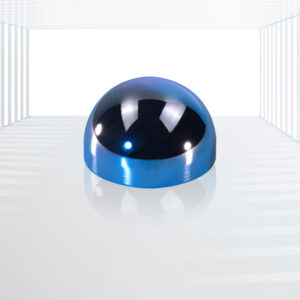
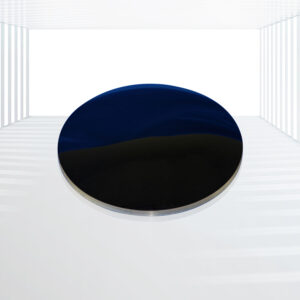
Broad IR Transmission: Silicon lenses are effective in both MWIR and LWIR ranges, making them versatile for various IR applications.
Low Density: Silicon has a low density (2.33 g/cm³), approximately half that of Germanium (Ge) or Zinc Selenide (ZnSe), making it ideal for weight-sensitive applications.
Hardness and Durability: Silicon is harder and less brittle than Germanium, offering better durability and resistance to mechanical stresses.
Chemical Resistance: Silicon exhibits high chemical resistance, ensuring longevity and stability in harsh environments.
Cost-Effective: Silicon is relatively inexpensive compared to other IR materials, providing a cost-effective solution for IR optics.
Applications: IR optics, thermal imaging, laser systems, military optics, medical equipment.
-
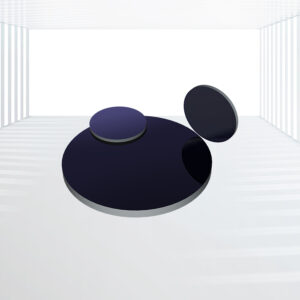
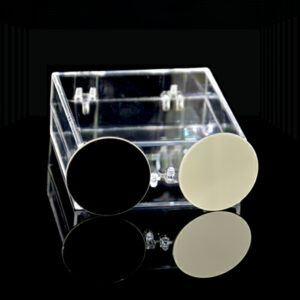
Excellent IR Transmission: CZ silicon is optimal for MWIR (3-5 μm) applications, while FZ silicon is suitable for LWIR (8-12 μm) due to its reduced absorption at 9 μm.
High Thermal Conductivity: Silicon’s high thermal conductivity makes it suitable for high-power laser applications.
Low Density: With a density of 2.329 g/cm³, silicon is lighter than germanium (Ge) and zinc selenide (ZnSe), making it ideal for weight-sensitive designs.
Durability: Silicon windows are chemically and abrasion-resistant, making them durable and suitable for challenging environments.
High Hardness: Silicon is the hardest material that is transparent to light in the 1000-1600 nm range, providing excellent durability and scratch resistance.
Applications: Lasers, IR imaging, weight-sensitive designs, etc.
-
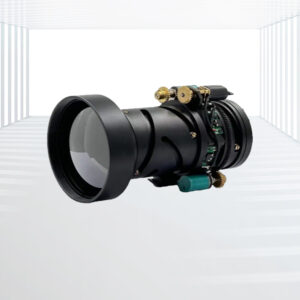
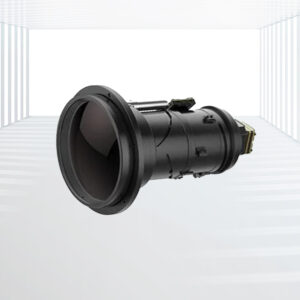
Wavelength Range: SWIR thermal imaging camera lenses operate in the short-wave infrared spectrum, typically covering wavelengths from 0.9 to 1.7 microns. This range allows them to capture thermal information beyond what is visible to the human eye.
Optical Design: These lenses are designed to efficiently transmit and focus infrared radiation within the SWIR range. They often incorporate specialized optical coatings to optimize transmission and reduce reflections.
High Transmission and Sensitivity: SWIR lenses are engineered for high transmission of infrared radiation, ensuring efficient capture of thermal information with minimal loss. This sensitivity is crucial for accurate thermal imaging applications.
Precision and Image Quality: SWIR thermal imaging lenses offer high precision in capturing detailed thermal images. They are designed to maintain sharp focus and clarity across the entire field of view, enabling accurate temperature measurements and analysis.
Applications: Thermal Imaging and Surveillance, Industrial and Scientific Imaging, Environmental Monitoring, etc.
-
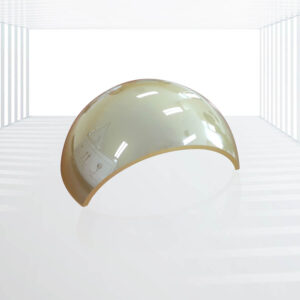
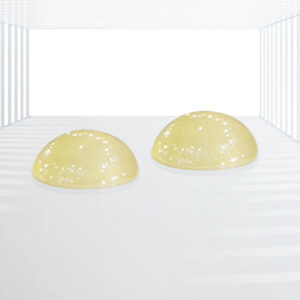
Flexural Strength: ZnSe’s flexural strength is lower than the 20,000 psi criterion but can be enhanced with coatings.
Knoop Hardness: At ~120 kg/mm², ZnSe is softer compared to other materials like sapphire.
Optical Transmission: ZnSe offers excellent transmission in the MWIR range, making it ideal for thermal imaging.
Thermal Properties: ZnSe has good thermal conductivity and a moderate thermal expansion coefficient, making it stable under varying temperatures.
Applications: IR optics, thermal imaging, missile domes, targeting systems, night vision, aerospace optics, etc.
-
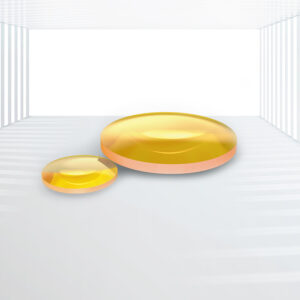
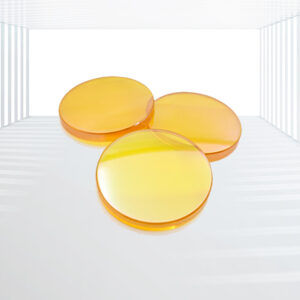
Broad Transmission Range: ZnSe lenses transmit efficiently across a wide spectral range from 0.6 µm to 16 µm, covering both visible and infrared wavelengths.
Low Absorption and Minimal Chromatic Dispersion: ZnSe lenses exhibit low absorption and minimal chromatic dispersion, which ensures high signal integrity and minimal distortion.
High Thermal Shock Resistance: ZnSe lenses can withstand significant temperature variations, making them suitable for high-power laser applications and thermal imaging.
Large Refractive Index: With a refractive index of 2.4 at 10.6 µm, ZnSe lenses are highly effective in focusing and manipulating IR radiation.
Customizability: Kingwin Optics offers custom ZnSe lenses with various coating options, including AR coatings at 3-5µm and 8-12µm, BBAR coating across 3-12µm, and specialized coatings for CO₂ lasers.
Applications: CO₂ lasers, thermal imaging, IR spectroscopy, military optics, medical equipment.
-
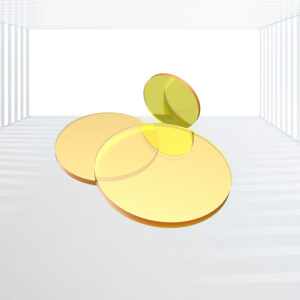
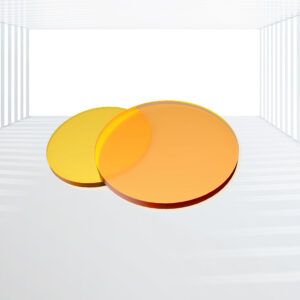
Broad Transmission Range: ZnSe windows provide excellent transmission from 0.6 μm to 16 μm, making them versatile for various IR applications.
Low Absorption Coefficient: The low absorption in the IR range ensures minimal signal loss and high transmission efficiency.
Low Chromatic Dispersion: This property minimizes signal distortion, enabling accurate transmission of IR radiation.
Thermal Properties: High thermal shock resistance and low absorption make ZnSe windows suitable for thermally demanding applications.
High-Power CO2 Lasers: ZnSe windows are ideal for use in high-power CO2 lasers due to their outstanding thermal properties.
Optical Purity: Made from high-purity CVD ZnSe grown in the USA, ensuring superior optical quality.
Applications: CO2 lasers, thermal imaging cameras, IR systems, etc.
-
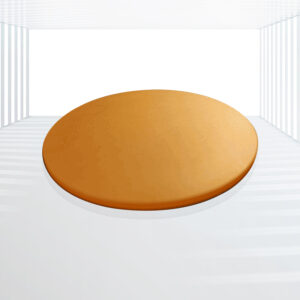
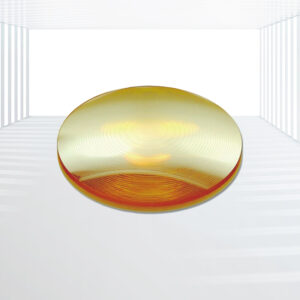
High Fracture Strength: Both types of ZnS lenses exhibit high fracture strength, making them suitable for use in demanding environments.
Mechanical Robustness: ZnS lenses are mechanically robust, providing durability and longevity in various applications.
Broad Transmission Range: Multispectral ZnS (Cleartran) lenses offer a broad transmission range from the visible (VIS) to the infrared (IR) region (0.4 to 14 µm).
Chemical Inertness: Multispectral ZnS lenses are chemically inert, ensuring stability and resistance to harsh chemical environments.
Low Scattering: Multispectral ZnS lenses exhibit low scattering, enhancing the quality and clarity of transmitted signals.
Applications: LWIR optics, Multispectral optics, military systems, etc.













-300x300.jpg)















